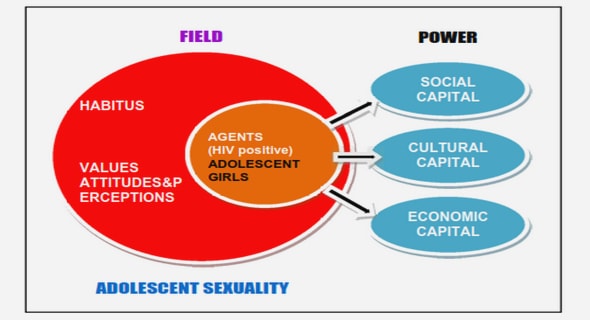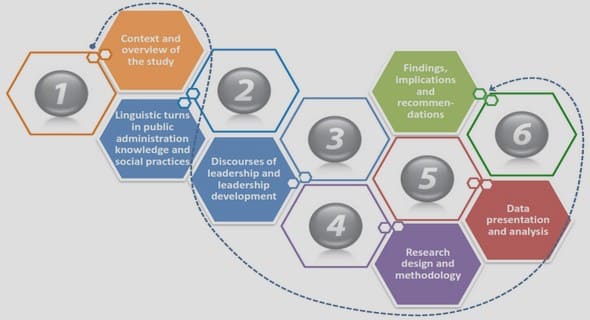Get Complete Project Material File(s) Now! »
Chapter Three Social Work Practice with Ethno-Racial Minorities :A Conceptual Understanding of Systemic Supports
Introduction
The previous chapter establishes that the organization – particularly, the mainstream kind – is a critical factor in supporting social work practice with ethno-racial minorities. Continuing to examine the significance of the organization as a focal issue in the thesis problem, this present chapter pursues the organizational factor one step further. What follows addresses the question: what mainstream organizations need to concretely do as supports to social work practice with ethno-racial minorities? In fact, addressing this question is to conceptually understand a core aspect of the thesis problem: when the social work peers talked about social work practice with ethno-racial minorities being marginalized in their employing organizations, what kinds of organizational best practices did they or could they expect that would be supportive of such an area of practice?
This chapter stays with most of the literature that informs the previous chapter, this time, with a focus on what it offers in the way of shedding light on these above-posted questions. In addition, like the last chapter, based on what I have recorded in my personal journal from professional peers discussions over the years, I will reference any relevant sentiments to help conceptualize the kinds of organizational best practices in these peer grouping’s imagery.
In the dialogic discourse of the social work peer group over the years, there were salient sentiments lending a conceptual image of what organizational support practices look like by contrast of a practice marginalization situation. As this chapter presents, this conceptual image finds substantiation in the literature.
Three systemic levels of an organization have been clearly advocated where actions and changes need to occur and be sustained in order to empower and support social work practice with ethno-racial minorities. These levels can be categorized as organizational governance, operational administration and service delivery management. I label these as “systemic levels” because coming from these organizational levels, decisions, policies, actions and behaviors have direct or indirect – but still ever so decisive – impact on service provision to the ethno-racial minority sector in the community.
This chapter discusses these three systemic levels in terms of their practices – as the literature proposes – that support and empower social work practice with ethno-racial minorities. However, before going into these discussions, I will first of all define these three systemic levels so as to be clear of their conceptual distinctions as well as how they relate in practice in organizations. These discussions constitute the four core sections entitled as follows:
- Section 3.1 Organizational Governance, Operational Administration and Service Delivery Management: Systemic Levels of Human Service Organizations
- Section 3.2 Organizational Governance: Doing Its Supportive Part
- Section 3.3 Operational Administration: Doing Its Supportive Part
- Section 3.4 Service Delivery Management: Doing Its Supportive Part
Organizational Governance, Operational Administration and Service Delivery Management: Systemic Levels of Human Service Organizations
By organizational governance, I am referring to the highest policy and decision-making echelon and the level of public accountability of any public service-oriented organization. In the case of Canada’s so-called voluntary sector, which is very much an integral, vital part of the mainstream human service delivery community, the board of directors of a non-profit organization carries out the governance responsibilities. (In the international community, the voluntary sector of non-profit organizations refers to the Non-Government Organizations or NGOs. In Canada, this sector’s “voluntary” label gives recognition to the fact that the core foundation of this type of organizations is of volunteers from the community. The board of directors – the organizational governance – is by law served by volunteers. Operationally, the organization typically functions with a significant contingent of volunteers who deliver services, run everyday operations and support sustenance efforts such as a fund-raising campaign. The fact that organizations of the volunteer sector significantly depend on charitable donations, also points to the voluntary nature of this revenue source.) Amounting to a duty of public accountability, these governance responsibilities encompass as a Canadian national study on the country’s voluntary sector recommends (Panel on Accountability and Governance in the Voluntary Sector 1999: iv):
- “Ensuring the board understands its responsibilities and avoids conflicts of interest;
- Undertaking strategic planning aimed at carrying out the mission;
- Being transparent, including communicating to members, stakeholders and the public, and responding appropriately to requests of information;
- Developing appropriate structures for the organization;
- Maintaining fiscal responsibility;
- Ensuring that an effective management team is in place and providing oversight of human resources;
- Implementing assessment and control systems; and
- Planning for the succession and diversity of the board.”
This list illustrates that organizational governance is responsible for the organization’s ethical best, the strategic pursuit of its mission, the development and maintenance of its fiscal and operational functions, its accountability to the community and the continuity of its governance. In other words, the organization sustains and develops on how well the governance echelon fulfills these responsibilities.
Worth noting for what this thesis addresses is a fundamental assumption behind the above points of governance responsibility. It is that organizational governance needs to appeal to general standards and ethics found in the discipline of commerce and business administration. While that assumption in itself should not point to how the organization behaves with respect to ethno-racial minority members of the community, it does however infer that the mainstream dominant business discipline exerts significant impact on how the organization works and behaves. For example, the implied need to be accountable to “members, stakeholders and the public” is a need meaningfully understood from the latent recognition that these people refer to the socio-politically dominant public perceived by the organization as representing the most generally agreeable Canadian mainstream business worldview about running a business. The volunteer sector has more reason than ever to attend to a worldview that at best only treats ethno-racial minority needs and demands at the market margins. For, particularly in this time of government funding cutbacks and fiscal restraints, the voluntary sector relies disproportionately on the charitable donations of the socially and politically dominant mainstream public. Therefore, it needs to be acknowledged that the Canadian mainstream worldview can hold sway over policy and practice of the volunteer sector organizations.
All this should raise questions about the criterion of “diversity” found in the last point of the above list of governance responsibility. One can assume that this is a criterion about opening up opportunities for ethno-racial minority perspectives and voices to have an impact at the governance level. A fundamental test of these opportunities is how much the governance leadership actively resists dominancy of the ethno-racial majority perspectives and discourses as the basis of doing business, and advocates for and implements an alternative governance worldview that allows the organization embrace ethno-racial diversity and differences in all areas. In other words, the introduction of a truly socially diverse governance model is, by definition, an introduction of a constant tension in governance work. Such tension is an energy source for the kind of organizational change called for by Canadian multiculturalism. In this context, tension is not then an undesirable quality as it is an inherent asset in the politics of democracy – just that, in the case of Canada, the democracy has a dimension of ethno-racial diversity. Thus, for an organization, at any of its operational levels, the important point is not whether there should be any tension; it is rather whether there are processes in place to ensure there is such creative tension and that such tension works effectively as a built-in catalyst of change.
In the case of human service agencies – such as social welfare and child protection departments – that are part of the government (for Canada, government may be any one of the two orders of government as identified in the Canadian constitution: federal, provincial), organizational governance can signify multiple locations at the top end of the government hierarchy. That is, it’s unlike non-profit organizations where governance basically resides with this one board of directors. If governance is about who is ultimately accountable and responsible for a government organization in a British-styled parliamentary democracy like Canada, it is clear that the government of the day answers to its policies and decisions to the electorate. However, beyond that, one would discern structural entities at the top end of the government hierarchy that are responsible for policies and decisions as drivers of public service delivery at the street level. These entities typically include the Cabinet and the ministers who run their respective public service bureaucracies by portfolios such as child welfare and protection, health care, education, foreign affairs, public works and national defense. However, these top structural entities of government are not ideologically and politically neutral decision-makers. The government of the kind of political system like Canada represents a political party’s ideological worldview, its promises to their supporters in the election and its everyday sense of what is politically expedient in response to influences of such societal forces as diverse pressure and interest groups. These political conditions typically steer the policy and decision directions that are couched in the language of the government’s responsible governance and accountability to the public.
Operational administration of an organization refers to the senior administrators and managers charged with implementing policies and decisions for which the governance component is accountable to the organization’s constituents. In the voluntary sector of non-profit organizations, this echelon typically includes the Chief Executive Officer (CEO) and senior managerial staff who together constitute the executive team responsible for the general operations of the organization. In terms of accountability, the CEO answers to the governance level of the organization; the senior managerial staff report to the CEO. (For Canadian non-profit organizations, CEOs typically have the title executive director.)
In larger administrative complex organizations – such as government ministries or departments, or such well established human service organizations as the YMCA and the many Catholic charity social service establishments in North American urban areas, the operational administration echelon tends to be multi-layers. However, typically, it does not digress from the structure of a CEO person with his/her entourage of senior managerial staff reporting to the top administrative position. A typical CEO position for a Canadian government ministry or department’s is the deputy minister with his/her assistant deputy ministers.
Service delivery management denotes the supervisory functions at the front-line service provision level. When social workers refer to such people in their organizations as “my case work supervisor”, “my clinical supervisor” or – as I have often come across – “my manager”, they are talking about that level of management they respond and report to directly. Service delivery managers often function in that organizational zone between administration and practice of client service delivery. By the way social workers refer to these managers, service delivery management is about putting program and service delivery policies and procedures in everyday practice by front-line social workers. For the front-line, these managers typically are conduits and messengers of these policies and procedures as set at the operational administration level. Just as significantly, as they are on-site supervisors of front-line social workers, they are often part of the service delivery or practice team process at the street-level office and explicitly or implicitly, their consultative recommendations and advices on everyday client service provision/practice issues are seen as organizational decisions or policies for specific client situations arising in the everyday service delivery process.
Now that the three systemic levels are distinguished and conceptually related, this chapter continues with its main agenda of discussing these levels individually in turn, examining what the literature says about each level with respect to supporting and empowering the practice of interest in this thesis.
GET THE COMPLETE PROJECT
Marginalization of Social Work Practice with Ethno-racial Minorities in Mainstream Human Service Organizations in a Canadian Setting: A Critical Exploratory Study of Systemic Issues


